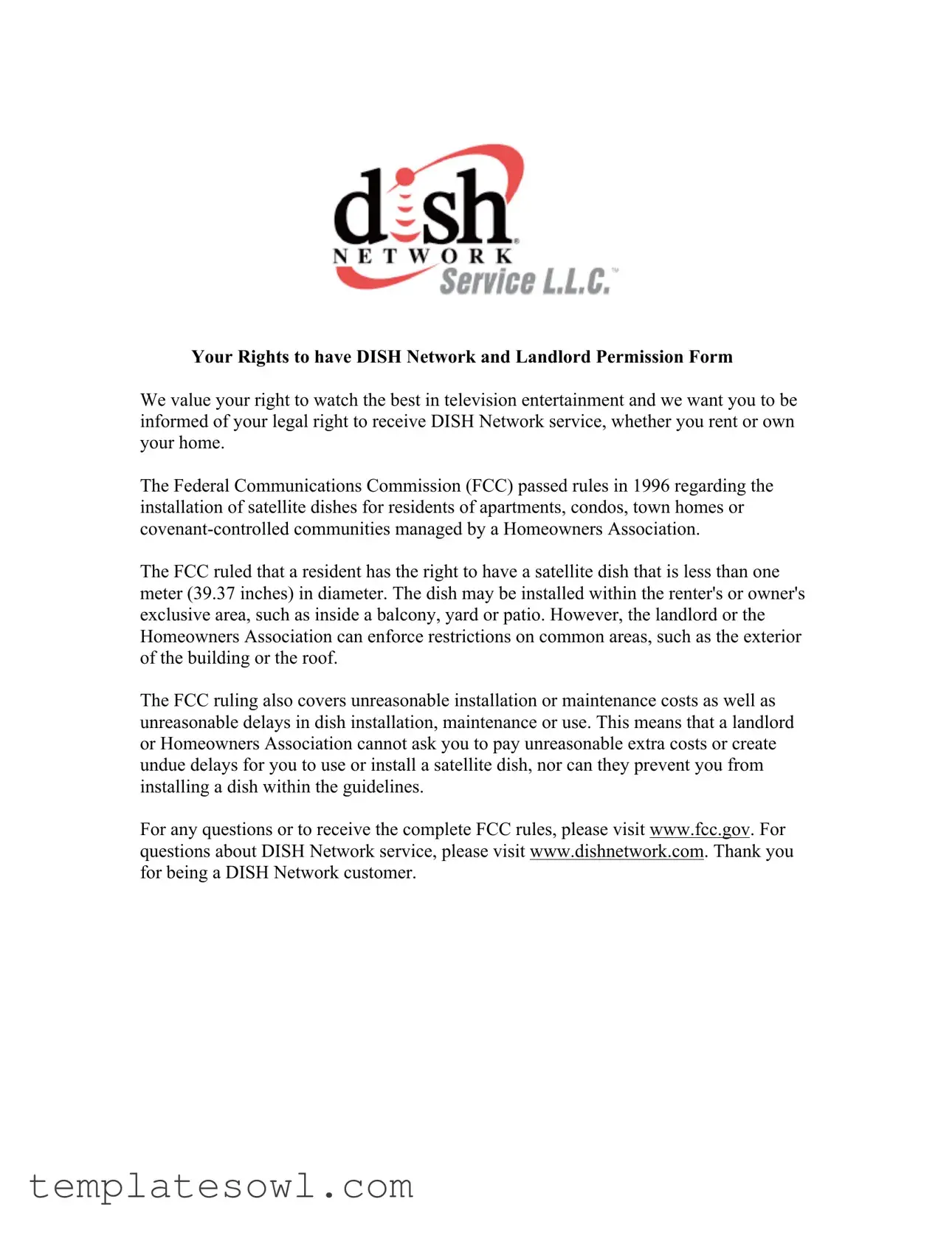What is the Dish Network Landlord Agreement form?
This form is a document that allows residents to obtain permission from their landlord or homeowners association to install a DISH Network satellite dish. It outlines the rights of tenants to have satellite services while clarifying any restrictions that the landlord or management may impose.
Who can use the Dish Network Landlord Agreement form?
This form can be used by any resident who rents or owns a property where DISH Network service is desired. It is especially relevant for those living in apartments, condos, or communities with homeowners associations.
What does the FCC say about satellite dish installation for residents?
The Federal Communications Commission (FCC) allows residents to install satellite dishes under certain conditions. Specifically, dishes less than one meter in diameter can be installed within areas that the resident exclusively controls, such as balconies or yards, without facing unreasonable restrictions from landlords or homeowners associations.
What areas can a landlord or homeowners association restrict?
Landlords and homeowners associations can place restrictions on common areas, including rooftops, outside walls, and other shared spaces. However, they cannot prevent installation in spaces that are exclusively used by the resident, such as a balcony or patio.
What are the legal implications if a landlord refuses permission?
If a landlord or homeowners association refuses permission unreasonably, they may be violating FCC regulations. Residents have the right to lodge a complaint with the FCC if they believe their rights to install a satellite dish are being infringed upon.
What should be included in the Landlord Permission form?
The form should include tenant information, property address, and a statement from the landlord or homeowners association granting permission for installation. It also requires the signature of the property manager or landlord, along with their title and date.
Can landlords impose additional fees for satellite dish installation?
Landlords cannot impose unreasonable fees or costs related to the installation and maintenance of satellite dishes. Any costs must be fair and transparent according to FCC rules.
How can I ensure my satellite dish installation complies with HOA rules?
To ensure compliance, residents should review their community's rules and regulations regarding satellite dishes. This information is typically available from the homeowners association. Gaining written permission using the Landlord Agreement form can help clarify rights and responsibilities.
Where can I find more information about my rights as a satellite dish owner?
For detailed information about your rights to install a satellite dish, you can visit the FCC's official website at www.fcc.gov. For questions specifically concerning DISH Network services, the website www.dishnetwork.com has further resources.
What if my landlord does not respond to my request to install a satellite dish?
If your landlord does not respond to your request within a reasonable timeframe, it is advisable to follow up in writing. If there is still no response, you may consider seeking legal advice or lodging a complaint with the FCC if you believe your rights are being violated.



